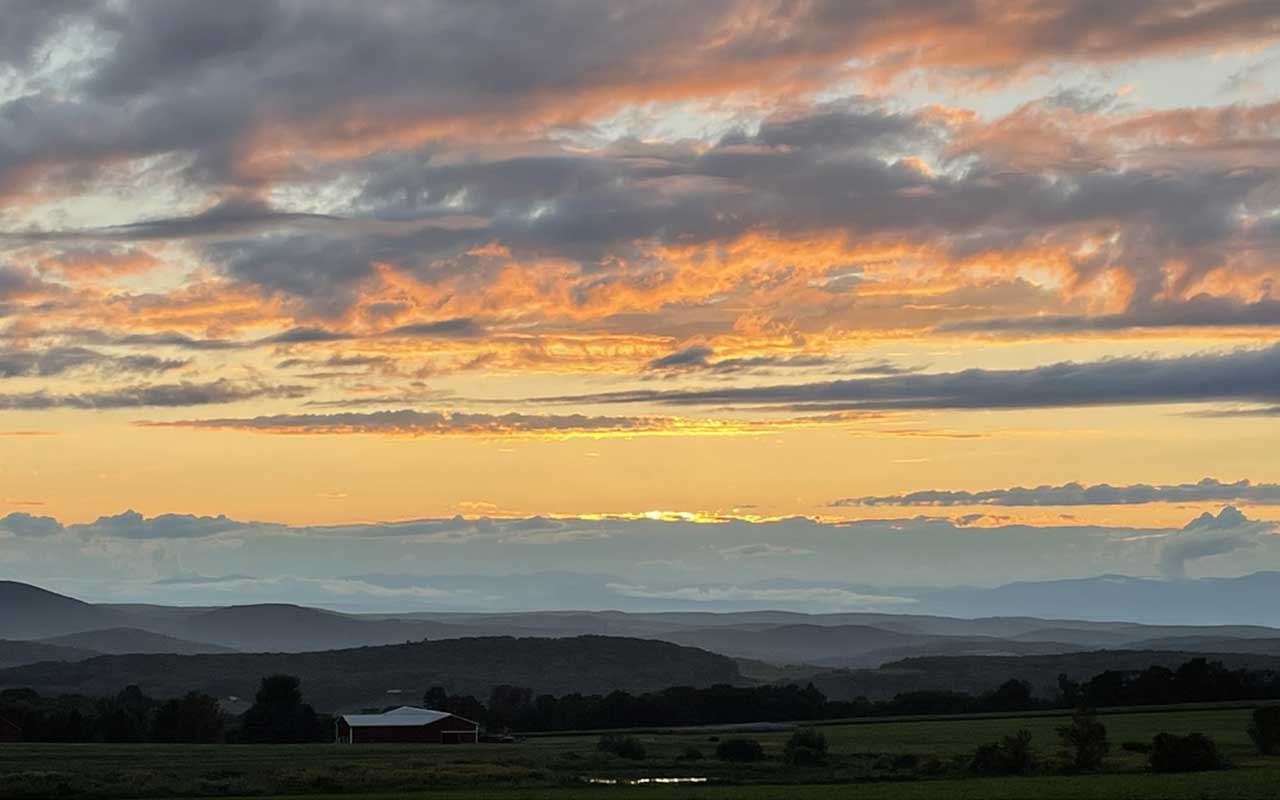Main Street Business

Talking Wilderness Therapy with Ed Thorney
Ed Thorney has an affinity for the woods; as he says: “I’ve always wanted to be outside.”
Ed is a certified Gestalt therapist, wilderness guide, experiential educator, and life-long advocate for people and nature. He has worked in the outdoor education field since 1982 in various capacities and founded Wilderness Therapy & Mentoring to blend his passion for the outdoors with his desire to help people.
He got his undergraduate degree in biology from Plymouth State College, then worked as a therapeutic wilderness instructor for the state of Connecticut’s Wilderness School. At the same time, he worked as a certifying instructor for Wesleyan University and Wilderness Education Association to certify others to be wilderness guides. He earned a masters in organizational development from Antioch New England University and from that training ran a corporate leadership consulting firm for 15 years.
“Human beings are intelligent creatures, and we get chock full of thoughts, concerns, fears, and options – many of which present us with more reasons to remain frozen in the same ineffective behavior! As a therapist or instructor, my job is to help people simplify the options, informed by their values so making decisions is easier. Life is all about choice.”
 A humanistic approach
A humanistic approach
According to Psychology Today, Gestalt is an “approach to psychotherapy that helps clients focus on the present to understand what is actually happening in their lives at this moment, and how it makes them feel in the moment, rather than what they may assume to be happening based on past experience. Along with person-centered and existential therapy, it is one of the primary forms of humanistic therapy.”
“The term ‘gestalt’ comes from the German word that means ‘whole.’ It has a lot to do with the ways in which we need to interact with our environment and have reciprocal, authentic connection. If we don’t get that – if the gestalt is interrupted in some way – we make up for it by being the loudest, quietest, strongest, smartest, funniest, etc. all in an effort to try and make things whole again,” Ed explained. “When these learned survival skills start to get in the way of their goals, people look for help.”
When Ed is working with people, especially parents and teenagers, he uses a dry erase board so that his clients can see their thoughts and feelings written out in front of them.
“I’ve found that nobody argues with their own data. My job is not to tell people what’s wrong but rather to ask the relevant questions so they see their own answers in print. Visual representation helps eliminate confusion,” he said.
This helps clients sort through their fears, assumptions, and thoughts to separate symptoms from causes. Symptoms do not go away until the cause is addressed.
“As a person goes through this process, it’s easier for me, then, to take guesses about what it’s like to be in their shoes and then ask to be corrected. This shows respect for who they are. It’s a joint effort. This is my version of Gestalt therapy.”
His career now is a culmination of the work that he’s done in corporate leadership, Gestalt therapy, and wilderness training.
“I tend to want to simplify things because my clients are always overloaded. I take the best of each of the disciplines that I’ve studied and apply what makes sense to each client.”
Spending years as a teacher has also taught him how to adapt to the people that he’s working with, so he readily recognizes that what works for one person likely won’t work the same for someone else. He works to make authentic connections with his clients so that the process is collaborative rather than hierarchical.
“At this point in my career, I love the work that I do because there are so many different aspects of it,” Ed said. “Today, I was hired to be a rock climbing facilitator. Other times, I’m asked to do more serious work. The work varies, and that’s part of what’s so great about it.”
Blending therapy and nature
So, why is it so important to blend therapy with nature?
“The real simple answer is to get away from walls and ceilings. You’re not being confined. You’re emotionally and visually more free.”
A big part of Ed’s work is creating an emotionally safe space where people feel comfortable opening up to him, and he believes that nature is the environment that does that the best. “Emotional and physical safety has to be unlocked in order for people to think and feel differently, and I think nature does that for people,” he explained.
In a classroom setting, he considers the relevant questions to ask students about their school and their lives. This means that they’re driving the conversation and therefore that Ed is sharing power with them.
“I often think about the balance of power. In my experience with thousands of people, the fundamental question, ‘who is running my life?’ is almost always at the center of their issues. As a therapist, I really function as a facilitator – sharing the power. Yes, they allow me the authority to structure the session, but they’re the ones providing the leadership and doing the work!”
In family sessions, Ed prefers to hear from the child first and allow them to get all of their feelings out while their parental figures sit quietly and listen. Then the parents speak while the child listens.
“That’s the creation of an emotionally safe environment, and it’s often the kind of boundary that people can’t set on their own,” he said. “It’s all about creating emotional safety in whatever environment we’re in, whether it’s individual, family, or group. It’s not just work, it’s a lifestyle.”
Services offered
Broadly speaking, Ed’s work is split between mentoring and school support. As far as age range goes, Ed doesn’t limit himself. He works with clients that are toddler-aged through grandparenthood.
Therapeutic wilderness mentoring is based on developing a relationship built on trust, respect, and fun. Activities include hiking, canoeing, rock-climbing, stream walks, and more. He offers therapeutic wilderness mentoring to individuals and in a family-style setting.
A wilderness therapeutic mentoring session is two hours long, with the first 90 minutes being spent directly with the child, young adult, or parent, and the remaining 30 minutes serving as a follow-up via email, phone, or in person within a week of the initial appointment.
“For family sessions, that’s where that intergenerational piece comes in. Working with kids and their parents, or sometimes even their grandparents, the connection between two or three generations and the patterns that are present become very apparent,” he explained. “I think it takes some of the blame out of the situation, too. When you start to look intergenerationally at patterns, people are more open to see that this has been going on for a while and it redirects the power back to them to end the cycle.”
He also works with schools in an outdoor education setting and as a counselor when he’s doing one-on-one work with individual students. Sometimes he facilitates a classroom dialogue. Ed works closely with educators to fit the same activities listed for mentoring into the school schedule.
Ed also offers professional development programs for educators and business leaders. He facilitates a two-hour workshop that focuses on effective communication and has on-site follow-up. The goal is to train educators to be more therapeutic in their approach to day-to-day teaching. From his experience as a corporate leadership trainer, he understands the importance of professional, empathetic development, which translates into emotional intelligence.
Finally, Ed also created the Institute for Wilderness & Community, which provides meaningful and relevant professional development to educators.
“IWC is how I see myself ‘passing the torch’ by training other adults,” he explained. “I am recruiting professionals – teachers, counselors, administrators – who wish to learn more of what I do and apply it to their own careers.”
Helping others
For Ed, the most rewarding part of his work is being able to see people feel better about themselves after sessions. “When I realize that someone has turned a corner in a positive way, and they’ve let something go that kept them from being emotionally free, well, there’s nothing better than that,” he said. “Plenty of moments I’ll be out at a restaurant, and I’ll run into former students or clients that will come up and talk to me. I’m reminded often of the importance and the benefit of living and working in a small town.”
Nothing comes without challenges, however, and Ed’s biggest obstacle to his work is time. “Time is always the reason that people can’t justify putting more effort into what they want to do,” he explained.
In the same vein, Ed also noted that the number of students can occasionally make it difficult to provide attention to everyone equally.
Going forward, Ed wants to pass the torch to others who have a passion for wilderness therapy and mentoring through his IWC program. “I’m hoping to attract more people to learn how to integrate outdoor education with social emotional learning.”
He also hopes to go into semi-retirement and do more private practice. “My personal goal is to have more people come to me to work on that family healing,” he said. “Passing the torch to as many others as I can means that more people can be helped.” •
To learn more about Wilderness Therapy & Mentoring and Ed Thorney, visit his website wildernesstherapyandmentoring.org.


